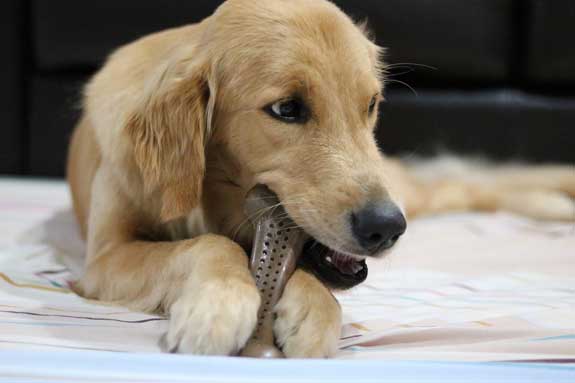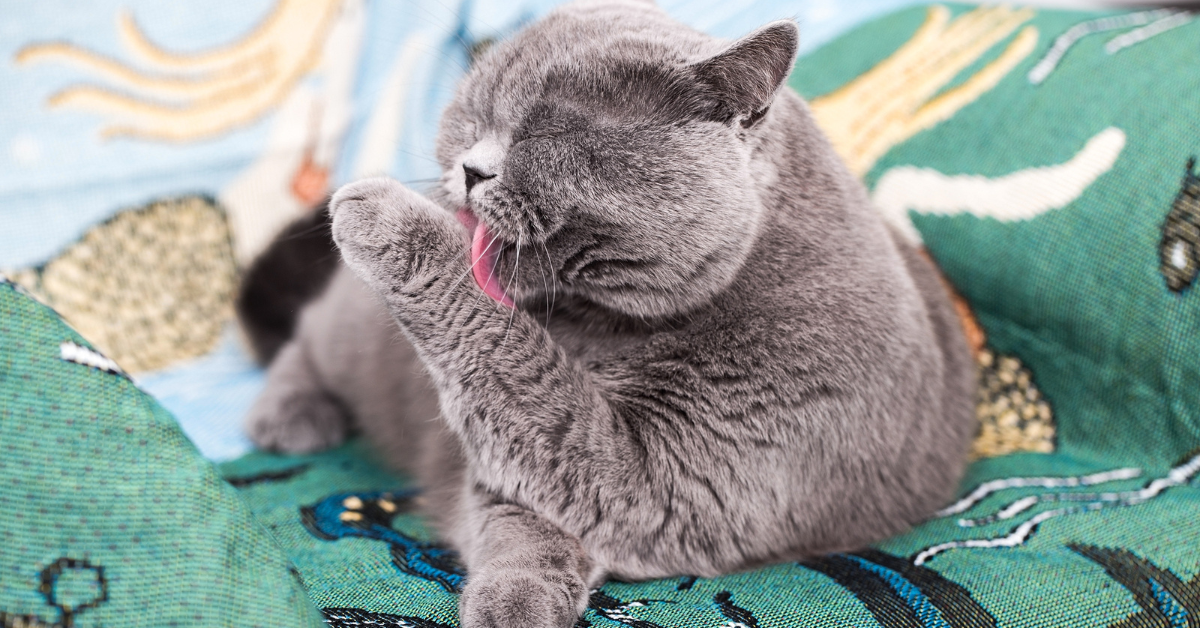The Dangers of Rawhide

Let's admit it. We all want what's best for our dogs. As pet parents, it is our sole responsibility to make sure we provide our pets with a happy and healthy lifestyle. We ensure this by providing our pets with quality pet food, access to fresh water 24/7, a green space to run and play, and safe, tasty treats to end the day with. As pet parents, it's also our responsibility to ensure that the treats and toys we give our pets are safe for them.
In a world where assorted treats and chew toys are made readily available in all sorts of varieties, it's relatively challenging to pick out one that best suits both your dog's needs and wants. Because the options never seem to end, we as pet owners are responsible for vetting whether or not the products we give to our pets are safe. While pet products do (and should) go through quality assurance and safety certifications, only you know your dog inside and out, and that extends to which types of toys and treats they should stay away from.
It can be quite overwhelming to cross-check every single dog treat, chew, or bone available on the market. However, one type of chew, in particular, has stirred up quite a bit of conversation and controversy among pet parents: rawhide.
Rawhide dog treats have grown quite popular and are among the most accessible forms of chews you can give your dog. Due to its status as a common dog treat, most pet parents may not be aware of the dangers rawhide can bring to your pet. This is why it may be surprising to you to find out that blockage and choking is a very real threat to your pet when you give them rawhide. This may cause you to ask yourself, "Is rawhide bad for my dog?". If rawhide chews are considered dangerous, why are they available almost everywhere? Are there any alternatives? Will my dog like those alternatives?
Well, we're glad you asked.
In this feature, we're going to explore some of the most common dangers of rawhide.
Let's get right into it!
THE CURIOUS CASE OF RAWHIDE
Rawhide chews are generally known for being long-lasting, tasty dog treats. They are usually derived from cows and are essentially the soft inner hide or the skin of an animal. Rawhide products can also feature hides from sheep, horses, and pigs. Why bring this up? The conditions in which these animals are raised and live can affect the overall quality of the finished product.
Preservation is often the first step in rawhide production, as hides are transferred in refrigerated containers. After undergoing several preservation methods, artificial flavoring and taste enhancers are applied to the rawhide, making it appealing to dogs. Since dogs are fond of chewing, rawhide often presents itself as the ideal treat for your pet. The rough texture can withstand a beating, even from the most aggressive chewers. Many rawhide dog chews are also relatively cheap, allowing pet owners to stock up.
So, what makes rawhide dangerous?
DANGERS OF RAWHIDE
1. Risk of Contamination – We mentioned how rawhide is made and how it is processed, but there is often a lack of transparency on what unfolds during the process. As is the case with many products made from animals, it's highly possible that these treats can contain bacteria that can be harmful to both you and your dog. These traces of toxic chemicals can potentially put you and your dog at risk if not identified immediately.
2. Choking Hazard – Just like with any other treat, getting the right size treat for your dog is extremely important. Rawhide treats, while they can withstand aggressive chewing, can eventually break down into smaller pieces that can cause blockage and choke your dog. These broken pieces are arguably the most significant threat and risk rawhide brings to your pet. If the pieces become small enough, they can lodge in your dog's throat and cause him to choke. If your pet attempts to swallow it forcibly, it can could cause even more problems with his throat or esophagus, such as cuts and abrasions.
3.. Digestive Complications – The nature of the processes that the rawhide undergoes before it's stocked on the shelf can cause quite a few complications to your dog's digestive system. Additionally, some dogs have had allergic reactions to some elements found in rawhide, and it can be quite challenging to identify and pinpoint the triggering ingredient after the fact.
RAWHIDE ALTERNATIVES
Due to the dangers and risks of rawhide, certain alternatives prove to be considerable rawhide alternatives for dogs.
Nylon dog chews sit at the top of the list and come in a variety of shapes and chew strengths perfect for any dog breed, size, and need. The popular nylon dog chews brand, Bark Bone makes all of their nylon chews with FDA-compliant, 100% pure nylon. Their wide variety of nylon bones comes in a wide range of flavors that dogs love. You can find Bark Bone Nylon Chews here at Petmate.

Another option is bully sticks, which provide general aid and support to teeth and gums and can be quite long-lasting, too. Dental chew sticks, just like bully sticks, tend to be more natural and provide dogs with the right amount of protein crucial for energy and development. These treats are also digestible and possess little to no additives and preservatives.
THE WRAP-UP
As pet parents, it's essential to understand the value of research and to put in the effort to identify which types of treats work best for your dog. We hope that this feature has helped you out in more ways than one. At the end of the day, it's always best to consult your trusted veterinarian to help you identify which treats work best for your pup!
Previous article

Next article

Related posts
View all-

5 Simple Tips to Make Sure Your Cat Drinks Enough Water
Ensuring your cat stays hydrated is important, but it can be challenging since many cats don't drink enough water. Dehydration can lead to kidney disease and other health issues. Fortunately, you can encourage your cat to drink more with a few simple changes. Read Article -

How to Keep Your Cat Busy at Night (So You Can Sleep)
For many cat owners, the quest for a good night's sleep while keeping their feline friends content and engaged can seem like a never-ending battle. Cats, naturally more active at night or early in the morning, often disrupt your sleep schedules with nocturnal activity, whether through playful nature or seeking attention. Read Article -

Should You Bathe Your Cat? Everything You Need to Know About Cat Hygiene
When it comes to cat hygiene, a common question among cat owners is, "Should you bathe your cat?" Understanding how to care for felines, especially bathing cats properly, is crucial for maintaining their overall health. Most cats are fastidious groomers, but specific scenarios like long-haired cats getting dirty or skin irritations, might require a bath.
Read Article



